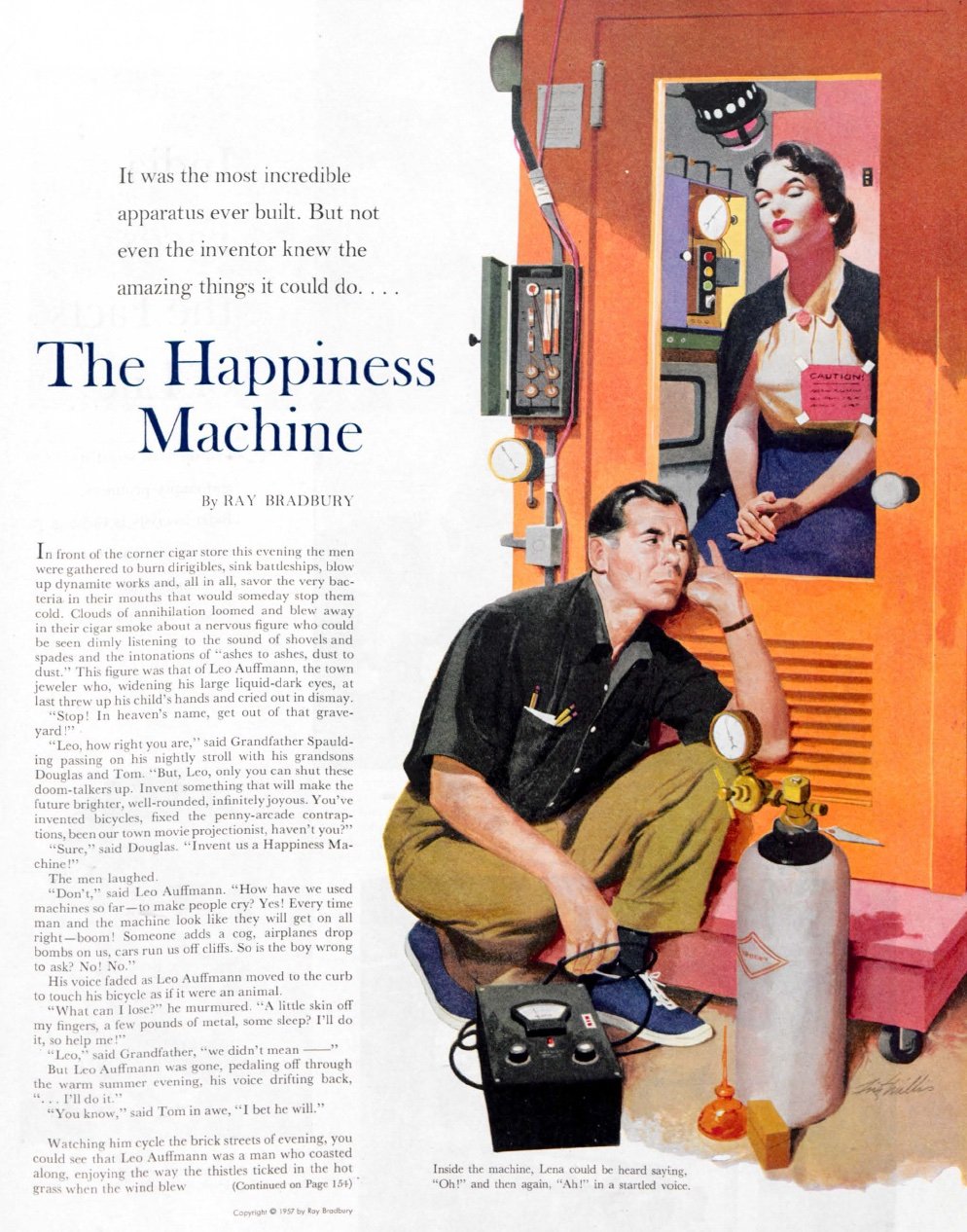The happiness machine and accepting life as it is
Image from the Saturday Evening Post
In 1957, Ray Bradbury published a nostalgic short story called “The Happiness Machine,” which explores a timeless question: what does it take to be happy? It’s a quick read at under five pages and is masterfully written, ripe with vivid figurative language like, “Darkness closed in a great wink on him,” and “A machine, now, to help boys change from peach fuzz to brier bramble, girls from toadstool to nectarine.”
The story follows Leo Auffmann, a jeweler and inventor, as he spends countless nights working tirelessly to create a machine that will bring his friends and family infinite joy and alleviate the “shocks of life”—“getting born, growing up, growing old, dying.” This four-part reference reminded me of the story of the Buddha, when the sheltered prince Siddhartha renounces his luxurious palace life and is stunned to encounter the four sights of old age, sickness, death, and asceticism on the streets. Bradbury sets us up to expect thematic parallels with Buddhism, which isn’t surprising since apparently he was a Zen Buddhist.
Anyways, Leo finishes his machine one night and when his wife, Lena, reluctantly tries it out, she sees wonderful sights and is transported to Paris, Rome, and the Pyramids. The machine then plays her a beautiful waltz, restores her youth, and shows her visions of dancing with her husband (something she hasn’t done in years).
But when the machine comes to a halt, life returns to normal, and Lena starts crying because she is reminded of everything she wants but doesn’t have. She realizes nothing the machine could do would make her happy:
‘While you’re in that thing, sure, a sunset lasts forever almost, the air smells good, the temperature is fine. All the things you want to last, last. But outside, the children wait on lunch, the clothes need buttons. And then—let’s be frank, Leo—how long can you look at a sunset? Who wants a sunset to last? So, after a while, who would notice? Better, for a minute or two, a sunset. After that, let’s have something else. People are like that, Leo. How could you forget?’
Spoiler alert: the machine eventually catches on fire, gets extinguished, and the family resumes their evening—the children go back to playing and setting the table for dinner, and Lena finishes cooking dinner. Leo realizes he already has what he needs to be happy. The problem with the machine was that it presented desires that couldn’t be fulfilled and didn’t reflect reality.
Happiness doesn’t come from our perceived notions of perfection, like visiting exotic places and having extravagant experiences. It comes from accepting and appreciating life as it is. And we appreciate certain things, like sunsets, because they don’t last. The story’s message is that you don’t need to be young or in Paris or Rome to be happy. We have everything we need to be happy.
If you liked this post, check out these:
5 essential steps to cultivate lasting happiness in your life
Old lessons on learning and wisdom (Siddhartha Part I)
The interconnectedness of the world and time (Siddhartha Part II)
